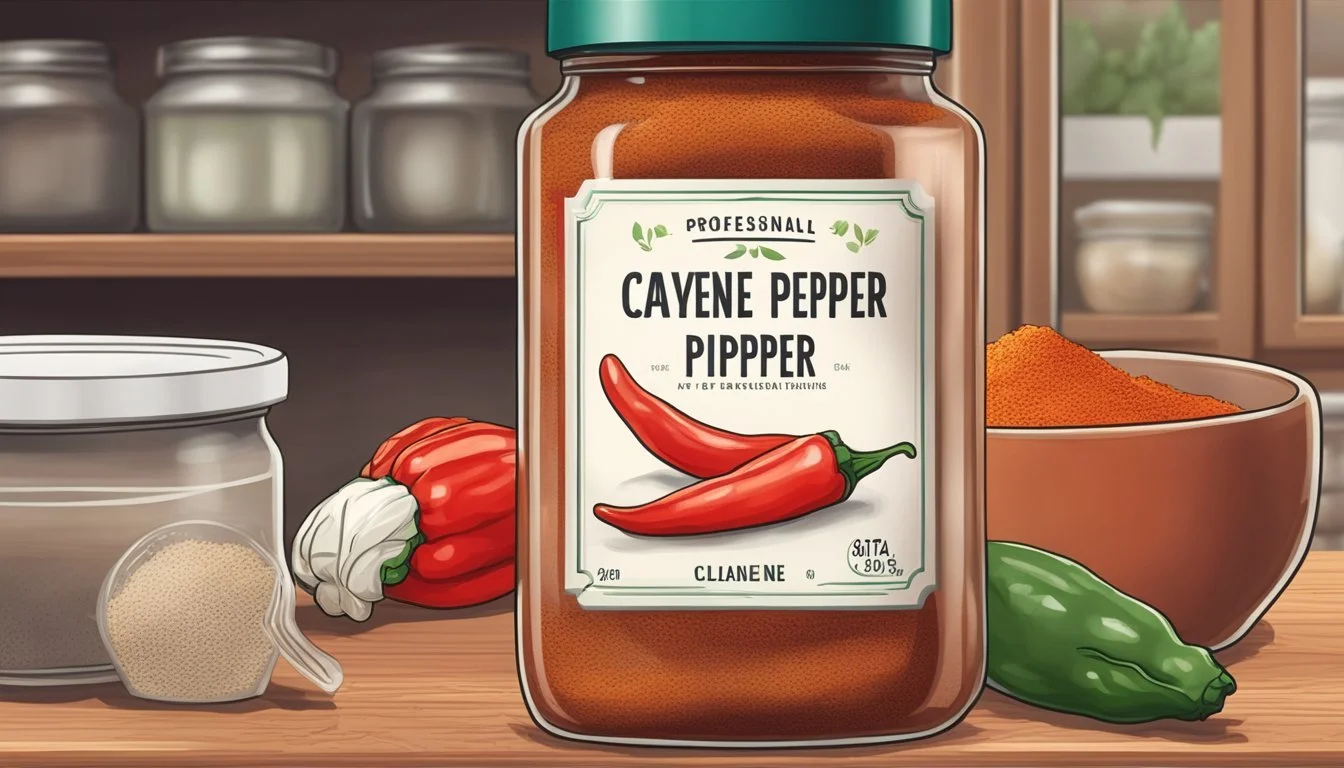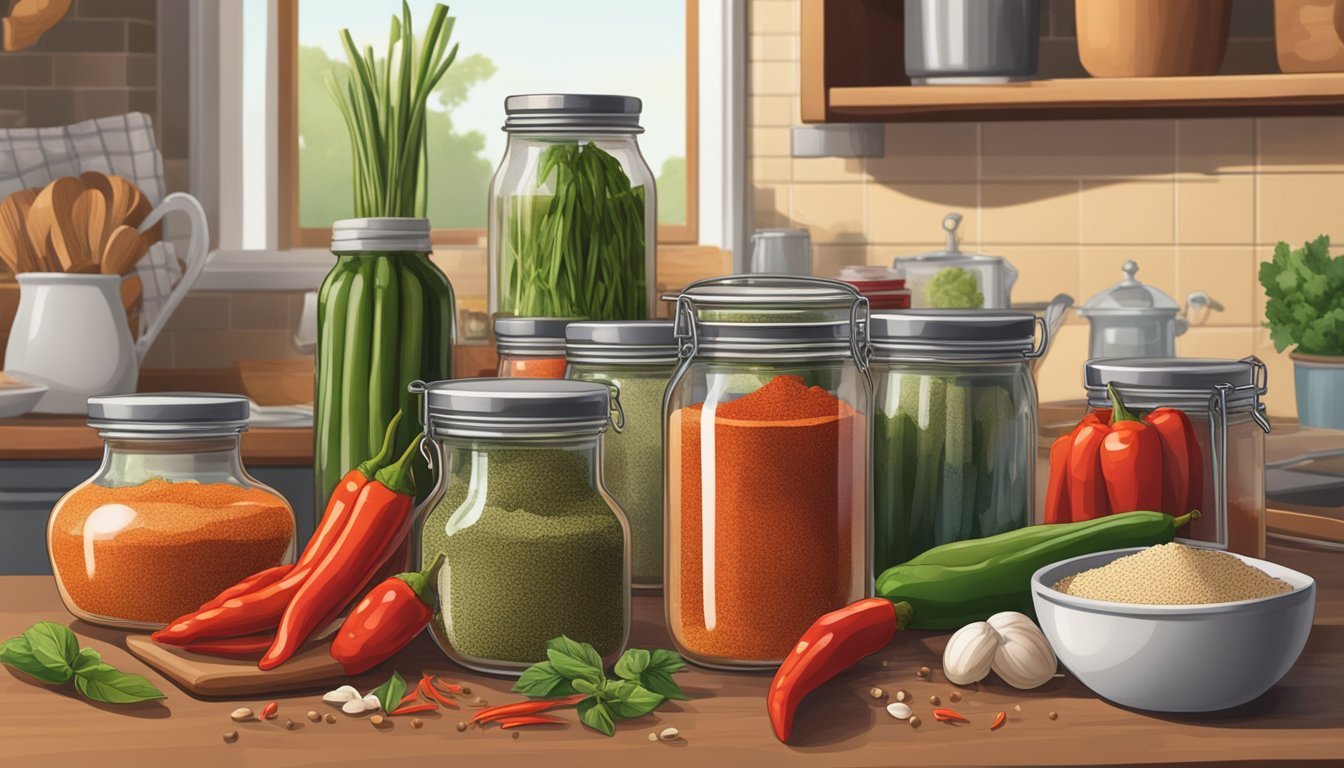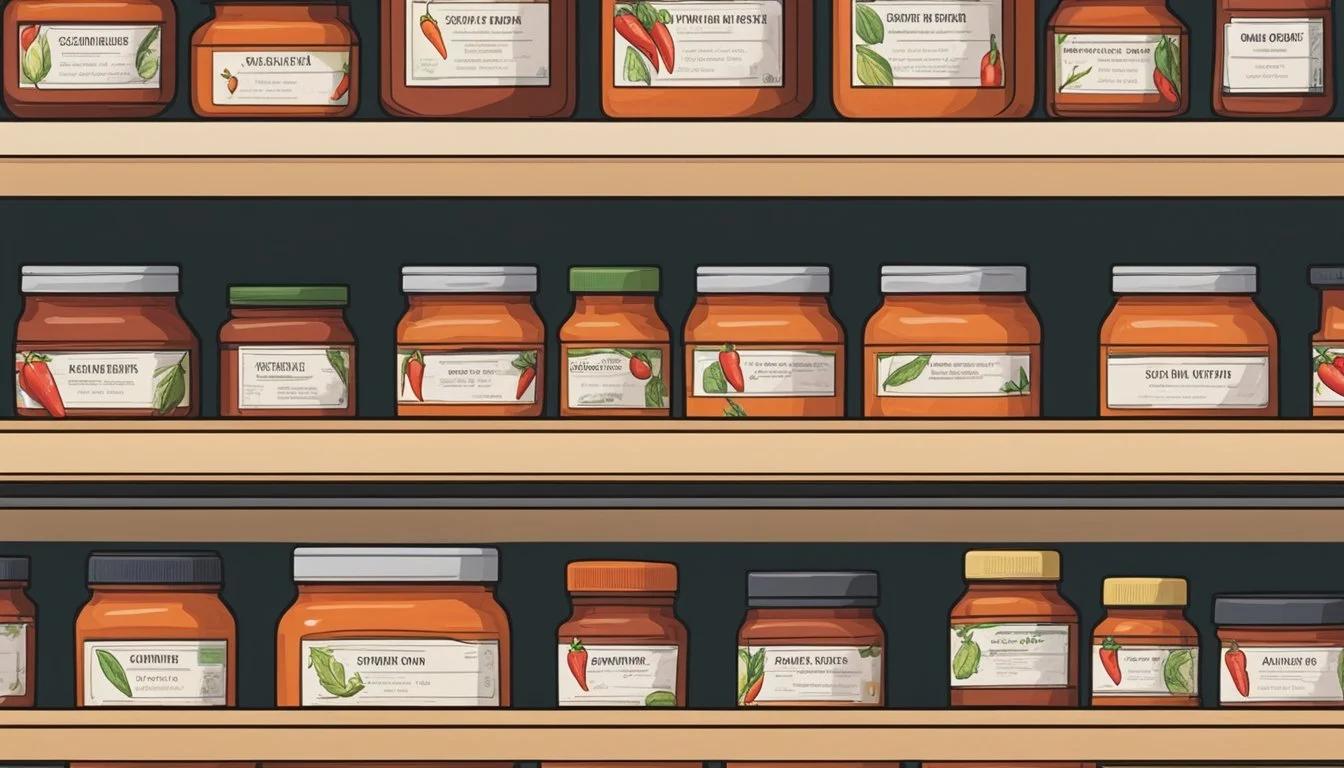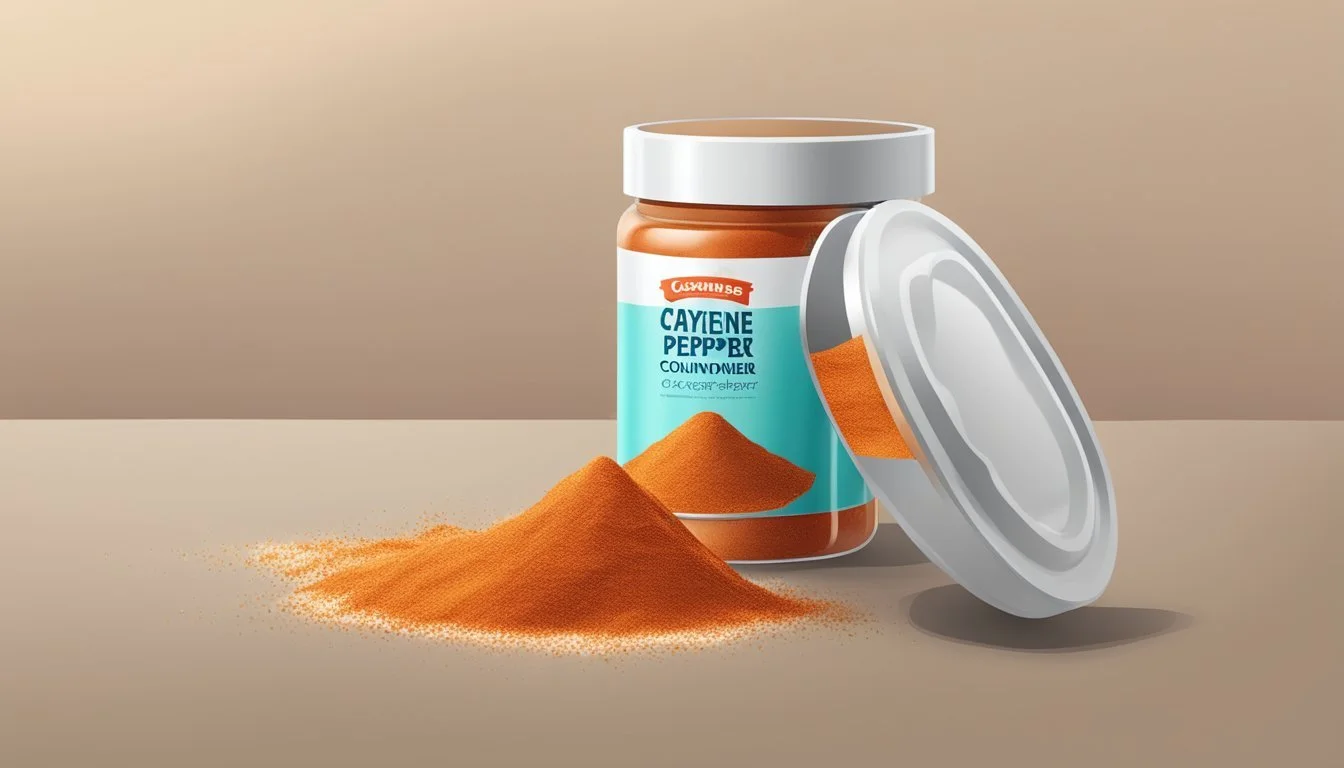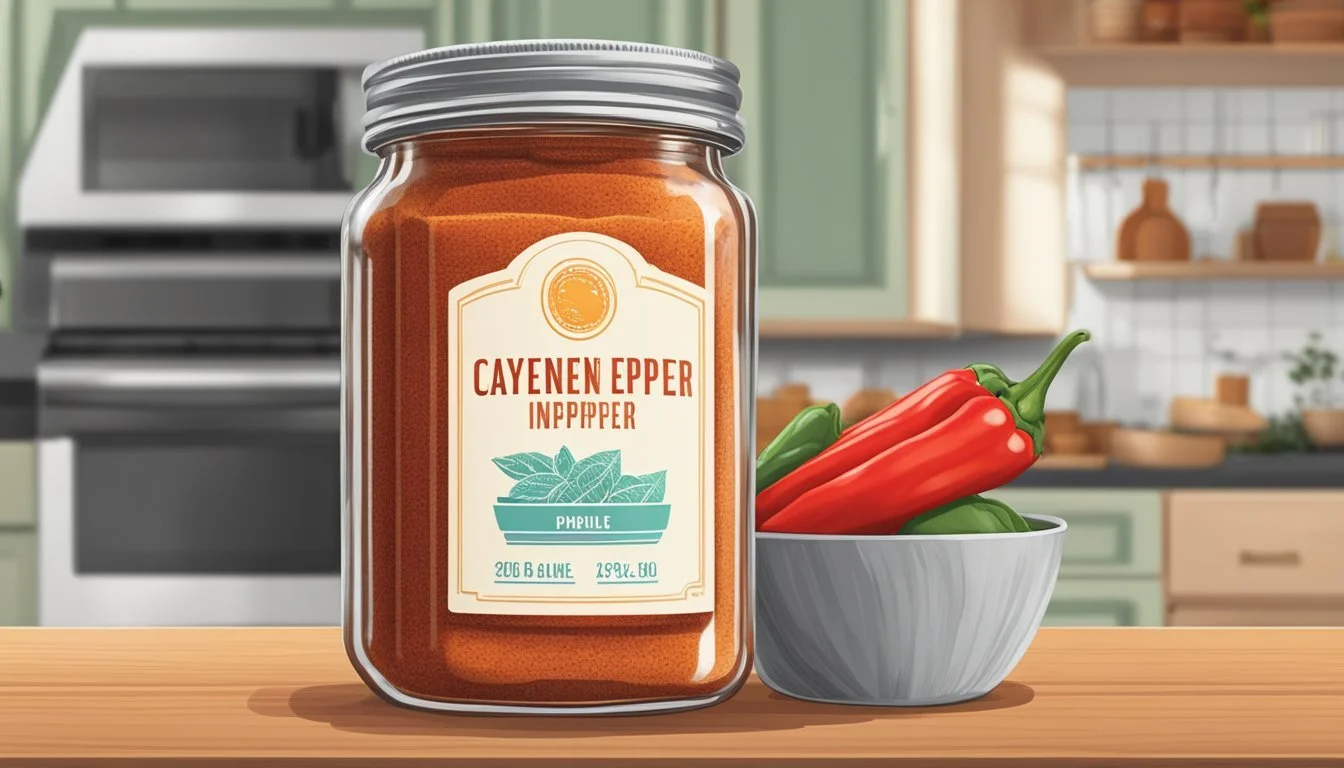Does Cayenne Pepper Go Bad? Storage Tips and Shelf Life Explained
Cayenne pepper, a staple in many kitchens, often raises questions about its shelf life and spoilage. Yes, cayenne pepper does go bad, but it won't spoil in a way that makes it harmful to consume. Rather, it gradually loses its potency and flavor over time. This spice, known for adding a fiery kick to various dishes, can be preserved longer with proper storage conditions.
The shelf life of cayenne pepper heavily depends on how it's stored. Keeping it in a cool, dark place, preferably in an airtight container, can significantly extend its freshness. On the other hand, exposure to heat, light, and air can accelerate its decline in quality. Some even recommend refrigeration to retain its vibrant color and flavor for an extended period.
Although aged cayenne pepper won't make you sick, its reduced potency can affect the quality of your culinary creations. Regularly checking for signs of spoilage, such as a faded color or diminished aroma, can help ensure that the spice maintains its desired kick in your dishes. Proper storage techniques are essential to maximizing its shelf life and potency, allowing you to enjoy the bold flavors of cayenne pepper in your cooking.
Understanding Cayenne Pepper
Cayenne pepper is a popular spice known for its intense heat and various culinary uses. It comes in different forms, each useful for specific applications.
Characteristics of Cayenne Pepper
Cayenne pepper is renowned for its vibrant red color and distinctive heat. The spice owes its fiery nature to capsaicin, a compound that stimulates the palate and can add a bold kick to dishes.
The fresh version of cayenne pepper is typically elongated and thin, while the dried or ground forms are more commonly used in cooking. The heat of cayenne pepper ranges between 30,000 and 50,000 Scoville Heat Units (SHU), making it significantly hotter than many other chili peppers.
In addition to its culinary benefits, cayenne pepper also offers numerous health benefits. It has anti-inflammatory and antioxidant properties, which make it a valuable addition to a balanced diet. Studies suggest that cayenne pepper may help boost metabolism and improve circulatory health.
Forms of Cayenne Pepper
Cayenne pepper can be found in various forms including whole spices, powder, and even as peppercorns. Each form has unique applications and benefits.
Ground Cayenne Pepper: This is the most common form, made by drying and grinding the peppers into a fine powder. It is convenient for seasoning dishes and incorporating into spice blends.
Dried Whole Cayenne Peppers: These are the whole peppers that have been dried. They can be rehydrated and used in recipes to impart a strong, fresh pepper flavor.
Cayenne Pepper Powder: Often used interchangeably with ground cayenne, this form is perfect for sprinkling over dishes for a quick burst of heat.
Peppercorns: Less common, these can be ground fresh for dishes requiring a more robust peppery heat.
Each form of the spice has a place in the kitchen and offers versatility in culinary applications, be it adding depth to a dish or a punch of heat.
Storing Cayenne Pepper
Proper storage of cayenne pepper ensures its potency and extends its shelf life. Key considerations involve maintaining an environment that protects the pepper from light, air, and moisture.
Ideal Storage Conditions
Cayenne pepper should be stored in a cool, dark, and dry place. This can be a pantry, cupboard, or drawer that does not experience direct heat or sunlight.
Airtight containers such as glass or opaque plastic with tight-fitting lids are recommended to prevent exposure to air and moisture, which can degrade the pepper's quality.
Opaque packaging helps to shield the pepper from light that can weaken its flavor and aroma over time.
Factors Affecting Shelf Life
Several factors can impact the shelf life of cayenne pepper:
Type: Whole peppers usually last longer than ground pepper.
Storage conditions: Exposure to light, air, or moisture significantly reduces the lifespan of cayenne pepper.
Packaging: Using airtight containers and avoiding transparent packaging helps preserve the pepper's properties.
Storage Locations: Dark, cool areas such as a pantry or cupboard are ideal.
Extended Storage Solutions
For long-term storage, cayenne peppers can be refrigerated or frozen:
Refrigeration: Fresh cayenne peppers stored in the fridge can last 1-2 weeks.
Freezing: Freezing extends the shelf life of fresh peppers to 4-6 months. To do this, wash, dry, and remove stems and seeds before placing in freezer bags.
Grinding and storing: Ground cayenne powder should be kept in airtight containers, in a dark place to maintain its potency.
Using these methods ensures that cayenne pepper retains its flavor and heat for as long as possible.
Signs of Degradation
Cayenne pepper, like all spices, can degrade over time. Several indicators can help determine if cayenne pepper has lost its quality, including visual and textural changes, shifts in aroma and flavor, and a decrease in potency.
Visual and Textural Changes
Visual inspection is one of the primary ways to detect degradation in cayenne pepper. Fresh cayenne pepper should have a vibrant red color. If the pepper appears dull, brownish, or has dark spots, it is likely expired. Ground cayenne pepper may show signs of clumping, which indicates exposure to moisture, leading to deterioration.
Whole cayenne peppers should be free from shriveling, wrinkling, or soft spots. If mold growth is visible, the peppers should be discarded immediately. Keeping an eye on these visual and textural changes helps ensure the spice is still at its peak quality.
Changes in Aroma and Flavor
Aroma plays a crucial role in assessing the freshness of cayenne pepper. Fresh cayenne should have a pungent and spicy aroma. If the spice smells musty, stale, or has a significantly reduced smell, it may have lost its potency.
Tasting a small amount can also help in assessing the flavor. Expired cayenne pepper will lack the characteristic heat and full-bodied flavor. If the spice tastes bland or has an off-flavor, it should be considered expired. Ensuring the aroma and flavor are intact is essential for maintaining the quality of your dishes.
Assessing Potency Loss
The potency of cayenne pepper is primarily due to its high capsaicin content, which provides the heat. Over time, this compound can degrade, causing a noticeable decrease in spiciness. To test for potency loss, you can compare a small amount of your stored cayenne pepper to a fresh batch.
If the heat intensity is significantly lower, it indicates that the pepper has lost its potency. For best results, cayenne pepper should be stored in a cool, dark place to preserve its capsaicin levels. This helps maintain its effectiveness and ensures that its spicy kick remains strong.
Safe Consumption and Culinary Uses
Understanding safe consumption and cooking with cayenne pepper can enhance your culinary experience. From ensuring the spice is fresh to recognizing when it’s time to discard it, here’s what you need to know.
Culinary Creativity with Cayenne
Cayenne pepper is a favorite among seasoned chefs and home cooks. Its versatility allows it to be used in various cuisines, from Mexican to Asian dishes.
Fresh cayenne packs a punch, adding heat to soups, stews, and marinades. It can be sprinkled on eggs, roasted vegetables, or mixed into spice rubs for meats.
Storage is key to maintaining its quality. Keep cayenne pepper in an airtight container, stored in a cool, dark place. Whole peppers can also be frozen to extend their shelf life.
Experiment with cayenne by incorporating it into different recipes. Just a pinch can elevate the flavor profile of otherwise simple dishes.
Recognizing Spoiled Cayenne Pepper
Identifying when cayenne pepper has gone bad is crucial for both taste and safety. Fresh cayenne pepper should have a vibrant red color.
Expired cayenne pepper often looks dull or brownish. The aroma is another indicator; if it smells musty or loses its strong, pungent scent, it has likely spoiled.
Spoiled cayenne may not pose a major health risk, but it will not provide the same level of flavor and heat. Always avoid using cayenne that has signs of mold or an off-putting smell to prevent an allergic reaction.
Proper storage techniques help in maintaining the spice’s quality. Keeping it sealed tightly and away from moisture and sunlight will prolong its shelf life.
Ensuring that your cayenne pepper remains fresh and vibrant can make a significant difference in your culinary endeavors.
Replenishing Your Spice Cabinet
Keeping your spice cabinet stocked with fresh and potent ingredients is essential for maintaining the flavor in your dishes. Cayenne pepper, like other spices, needs to be replaced periodically to ensure it is always of peak quality.
When to Replace Cayenne Pepper
Cayenne pepper should be replaced when it begins to lose its vibrant red color and becomes dull or brownish. Diminished aroma is another clear sign that it’s past its prime. Proper storage conditions can prolong its shelf life, but eventually, it will need to be replaced. Ground cayenne pepper stored in airtight containers lasts about 3 to 4 years, while whole dried cayenne peppers can last up to 4 years.
Monitoring the expiration date and checking for any musty or off odors will help determine when to replace it. Frequent use of the spice may mean replacing it more often to ensure it retains its potency and flavor.
Purchasing and Repackaging Tips
When buying cayenne pepper, choose small quantities to avoid waste and ensure freshness. Look for vibrantly colored flakes or powders with a strong, pungent aroma. Opt for packing in airtight containers to maintain its freshness longer.
If repackaging, transfer the cayenne pepper into dark glass jars or opaque containers to protect it from light, which can degrade the spice. Label containers with the purchase date to keep track of freshness. It's important to store it in a cool, dry place, such as a spice cabinet, away from heat and humidity.
Proper repackaging and storage can significantly extend the life of cayenne pepper and other spices and dried herbs, ensuring your dishes always taste their best.
Future Considerations for Cayenne Pepper
Looking ahead, there are exciting advancements and sustainable practices that could significantly impact the preservation and use of cayenne peppers.
Advancements in Preservation Techniques
Innovations in food preservation are continuously emerging. One promising area is the use of essential oils and natural extracts to extend the shelf life of cayenne peppers. These natural preservatives can help maintain both flavor and potency while reducing the need for chemical additives.
Research is also exploring modified atmosphere storage (MAS), which alters the composition of gases surrounding the spice. This method can slow down the oxidative processes that lead to deterioration, thereby extending freshness.
Cryogenic freezing is another technique under investigation. This method involves freezing the peppers at extremely low temperatures, which can lock in flavor and nutrients better than traditional freezing methods.
Sustainable Practices in Spice Usage
Promoting sustainable practices in the production and use of cayenne pepper is crucial for minimizing its environmental impact. Key steps include encouraging organic farming practices that avoid synthetic pesticides and fertilizers, which are harmful to the ecosystem.
Waste reduction through proper storage and portion control can also play a significant role in sustainability. Recommending airtight containers and cool, dry storage places can help preserve the spice longer and reduce waste.
Additionally, there's a growing push for fair-trade certification in the spice industry. This ensures that the farmers who grow cayenne peppers receive fair compensation, promoting a more sustainable and ethical supply chain.
By adopting these strategies, it is possible to enjoy cayenne peppers more responsibly and sustainably.

